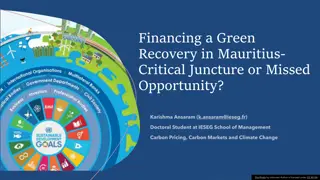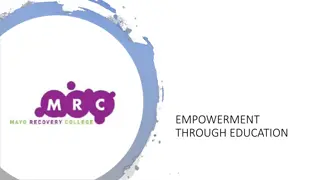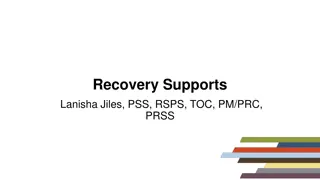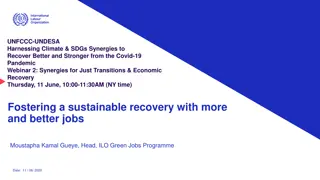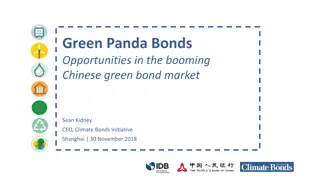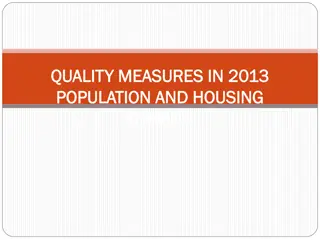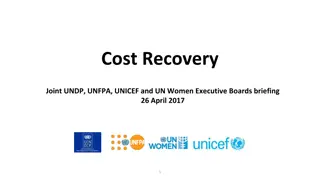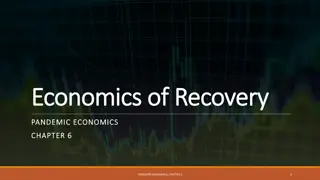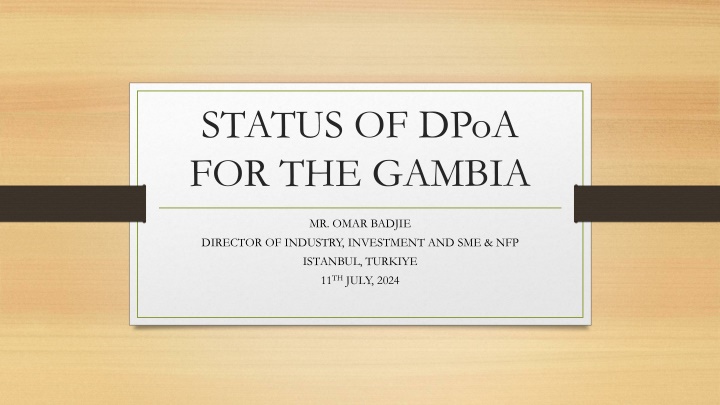
Green Recovery National Development Plan for The Gambia 2023-2027
The Government of The Gambia has formulated a Green Recovery National Development Plan (NDP) 2023-2027 to address challenges such as Covid-19 and climate change while focusing on resilience and sustainable development across various sectors.
Download Presentation

Please find below an Image/Link to download the presentation.
The content on the website is provided AS IS for your information and personal use only. It may not be sold, licensed, or shared on other websites without obtaining consent from the author. If you encounter any issues during the download, it is possible that the publisher has removed the file from their server.
You are allowed to download the files provided on this website for personal or commercial use, subject to the condition that they are used lawfully. All files are the property of their respective owners.
The content on the website is provided AS IS for your information and personal use only. It may not be sold, licensed, or shared on other websites without obtaining consent from the author.
E N D
Presentation Transcript
STATUS OF DPoA FOR THE GAMBIA MR. OMAR BADJIE DIRECTOR OF INDUSTRY, INVESTMENT AND SME & NFP ISTANBUL, TURKIYE 11THJULY, 2024
1. Introduction The Government of The Gambia has formulated The Green Recovery Focus National Development Plan (NDP 2023 - 2027) as a successor to the elapsed NDP 2018-2022. This new planning framework, developed under the leadership of The Government of The Gambia with a whole of society approach, will serve as the vehicle to chart the recovery of The Gambia from Covid-19 and other shocks such as climate change, as well as address the medium-term transformational aspirations of the country. The Plan is in seven pillars as shown below: Pillar I: Resilience to Shocks and Crises Pillar II: Governance Reforms; Pillar III: Macroeconomic Stability and Growth; Pillar IV: Human Capital Development; Pillar V: Agriculture, Environment, Natural Resources and Climate Change; Pillar VI: Empowerment, Social Inclusion and Leaving No One Behind; and Pillar VII: Energy, Infrastructure and Connectivity
2. NDP- DPOA DPOA PRIORITIES NO National Development Plan Pillars UNSDCF STRATEGIC OPTIONS Pillar I: Resilience to Shocks and Crises Priority 5. Addressing climate change, recovering from the COVID-19 pandemic, and building resilience against future shocks; Strategic Option1: Green Resilient & Inclusive Livelihoods 1 Pillar II: Governance Reforms; Priority 6. Mobilizing international solidarity, reinvigorate global partnerships and innovative tools for risk-informed sustainable development - A march towards sustainable graduation. Strategic Option 2: Human Development, Social Inclusion & People centered Governance 2 Pillar III: Macroeconomic Stability and Growth; Priority 3. Structural transformation as a driver of prosperity; Strategic Option 2: Human Development, Social Inclusion & People Centered Governance 3 Pillar IV: Human Capital Development; Priority 2. Leveraging the power of science, technology, and innovation to fight against multidimensional vulnerabilities as well as to achieve the Sustainable Development Goals (SDGs); Strategic Option 3: Innovate and Integrate Development 4 Pillar V: Agriculture, Priority 2. Leveraging the power Strategic Option 3: Innovate and 5
IMPLEMENTATION STATUS Final review of The IPOA: has indicated that the National Development Plan (NDP) makes an explicit commitment to integrate and implement the SDGs and Agenda 2063, as well as the Paris Agreement on Climate Change and Programme of Action. This analysis shows that the NDP clearly addresses the economic, environmental and social dimensions of sustainable development and includes a strong focus on critical governance issues as well as on addressing inequality. The Government is working with UN partners (UNRC, UNDP and UNCDF) to develop a National Implementation Strategy for DPOA. That is in-line with the UNSDCF (United Nations Sustainable Development Cooperation Framework of The Gambia) Doha
Monitoring & Evaluation Framework of the NDP and UNSDCF (embedded DPoA) Monitoring and Evaluation Framework of GRF-NDP The monitoring and the evaluation of the NDP is done at three levels: Executive level- A Delivery Unit is situated at the Office of the President (OP) to ensure implementation of the priorities and to manage the Presidential M&E system. Sector level Citizens' level. Monitoring, Coordination and Evaluation for the UNSDCF The Coordination and Monitoring is done at: Joint Steering Committee (RCO & UN Agencies oversight) Thematic Working Groups Programmes Other Partners (Government, CSO /NGOs)
Monitoring & Evaluation Framework of the NDP and UNSDCF (embedded DPoA) cont: NDP Monitoring & Evaluation Framework for each Pillar consist of: Outcomes Indicators Baselines (2022) National Targets (2027) Means of Verifications UNSDCF Monitoring and Evaluation Framework: Embedded into the UN-INFO M&E Joint Work plans Framework for Monitoring Risk & Opportunities Annual Performance Review & Country Results Reporting Evaluation Plan
CHALLENGES AND WAYFORWARD Poverty reduction has been most significant in the urban Greater Banjul Area. While less than half the population lives in rural areas, they account for 60 per cent of the total poor. Rural poverty went up from 64.2% to 69.5% from 2010-2015/2016. The service sector accounts for about 65 per cent of GDP, driven by the wholesale and retail subsectors (25 per cent), followed by transportation, storage, communications and tourism; industry contributed less than 20 per cent of GDP for the last decade. Agriculture generates about 75 per cent of household income and provides livelihoods for 70 per cent of the labour force. As a way forward, The Gambia is taking stock of the final review of the 2023 Progress Report of the NDP; success, challenges and recommendations. The recommendation will be inbuild into the National DPOA Implementation Strategy.






